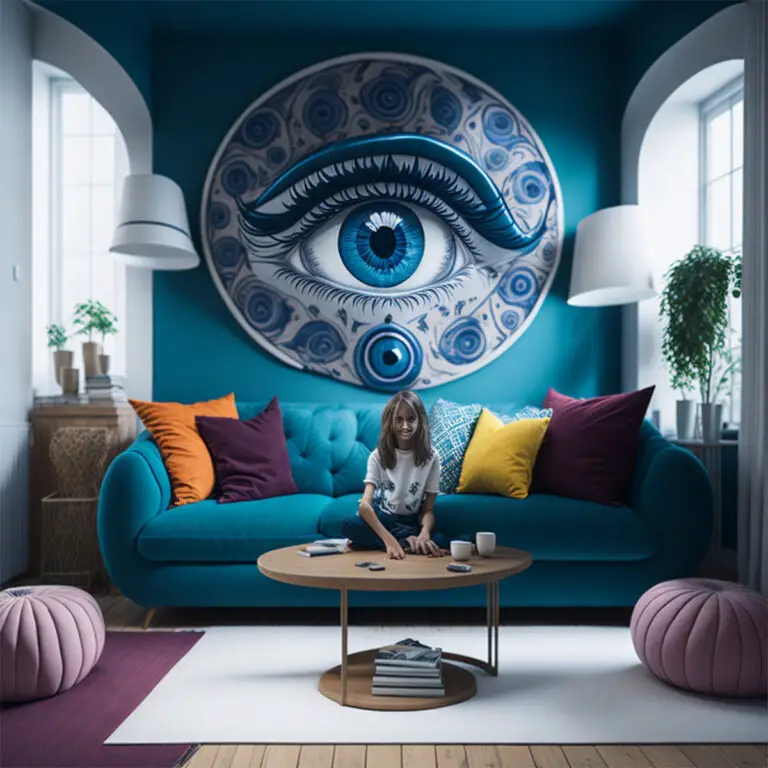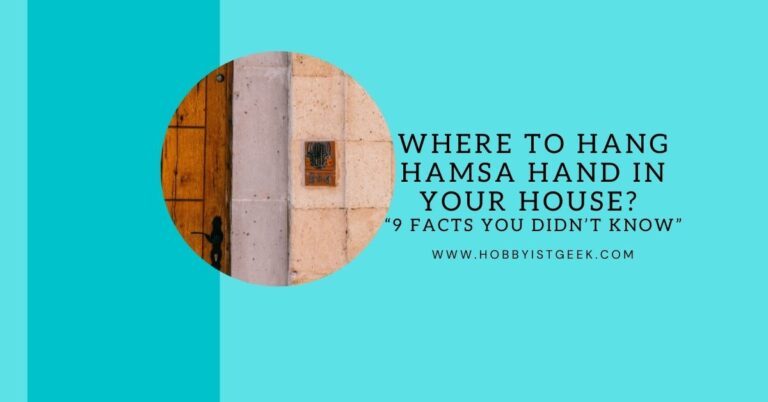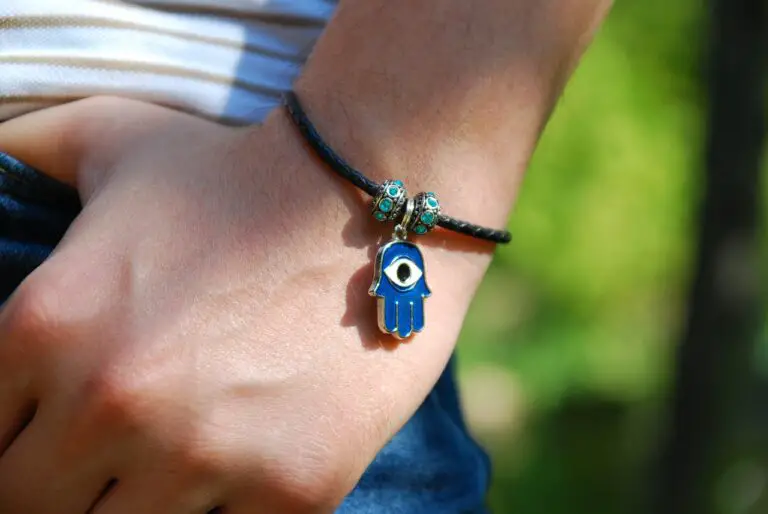Evil Eye and Mental Health: Dispelling Myths
Evil Eye and Mental Health: Dispelling Myths
Introduction
Evil Eye and Mental Health Have you ever heard someone say, “She must have the evil eye”? The concept of the evil eye has been deeply rooted in various cultures for centuries, often associated with negative energy and supernatural powers.
It is an ancient belief that certain individuals possess the ability to cast malevolent glances, resulting in misfortune or even physical and mental ailments for those unfortunate enough to be on the receiving end. While this superstition may seem far-fetched to some, it is important to explore its potential impact on mental health.
The Evil Eye Concept: Unveiling Mysteries
The evil eye is a belief that transcends time and cultural boundaries. In its essence, it revolves around the notion of a gaze capable of inflicting harm or misfortune upon others. This gaze can either be intentional or unintentional, but its effects are believed to be real by those entrenched in this belief system.
While interpretations may vary from culture to culture, the underlying concept remains similar – someone with an envious or malevolent intent casts their gaze upon an individual or object, subsequently bringing about bad luck and adverse consequences. This concept can encompass diverse manifestations across different regions of the world; some cultures attribute it to envy alone, while others attribute it to jealousy or even admiration taken too far.
The Connection Between Evil Eye and Mental Health
Now that we have gained a basic understanding of what underlies this intriguing belief system, we must delve into how it connects with mental health. It is crucial not to dismiss these beliefs as mere superstitions without considering their potential psychological impact on individuals who adhere to them.
The connection between the evil eye and mental health lies in the profound influence our thoughts and beliefs can have on our well-being. When people genuinely believe they are under a curse or the malevolent gaze of others, it can create a significant psychological burden.
This burden can manifest as anxiety, stress, and even depression. Moreover, the fear of falling victim to the evil eye can lead individuals to constantly worry about their own success and well-being, potentially affecting their overall mental health and quality of life.

Understanding the Evil Eye
Origins and Cultural Significance of the Evil Eye Belief
The concept of the evil eye has a rich and fascinating history that dates back thousands of years. It is believed to have originated in ancient civilizations such as Mesopotamia, Egypt, and Greece. The belief in the evil eye was deeply ingrained in these societies, where it was seen as a powerful force capable of causing harm or misfortune to others.
This belief then spread across different cultures and regions, evolving and adapting to local customs and traditions. In many cultures, the evil eye is considered more than just a superstition; it holds significant cultural and religious significance.
For example, in Mediterranean countries like Greece, Italy, and Turkey, the evil eye is believed to possess an envious gaze that can bring harm to those who are targeted by it. In some Middle Eastern countries like Iran and Iraq, the belief in the evil eye is deeply rooted in Islamic beliefs about envy and protection from its negative effects.
Different Interpretations across Various Cultures
While the core concept of the evil eye remains consistent across cultures – an intentional or unintentional malevolent glare that can cause harm – there are variations in how this belief is interpreted. Different cultures have their own unique understanding of what constitutes an evil eye and how it affects individuals. For instance, some cultures believe that certain individuals possess innate powers to cast an evil eye intentionally on others out of envy or jealousy.
Others believe that anyone can inadvertently give someone else an evil eye simply by admiring them excessively or expressing too much praise without proper caution. Cultural interpretations also vary regarding protective measures against the evil eye.
Some societies rely on amulets or talismans with symbolic shapes like eyes or hamsas (hand-shaped symbols) as a means of warding off its influence. Others may perform rituals, recite prayers, or engage in specific gestures to protect themselves or their loved ones from the perceived harm of the evil eye.
Understanding the origins and cultural significance of the evil eye belief helps shed light on why this concept holds such importance for various communities worldwide. By recognizing and appreciating these diverse interpretations, we can have a more comprehensive understanding of how the evil eye belief intersects with mental health and work towards dispelling the myths surrounding it.
Dispelling Myths about the Evil Eye and Mental Health
Myth 1: The evil eye is a supernatural force causing mental health issues
When it comes to the concept of the evil eye and its supposed influence on mental health, there is often a blur between cultural beliefs and psychological factors. Many cultures have long-held beliefs in the evil eye, attributing it to various supernatural forces that can cause harm, including mental health issues. However, it is important to recognize that cultural beliefs can indeed have an impact on mental well-being, but these beliefs should not be mistaken as direct causes of psychological problems.
Cultural beliefs shape our perceptions, attitudes, and behaviors. They provide a framework within which we interpret events and understand ourselves and others.
In this context, believing in the power of the evil eye might trigger feelings of anxiety or fear for some individuals. These emotions can indirectly affect mental well-being by influencing thoughts, emotions, and behaviors.
For example, constantly worrying about being under the influence of the evil eye may increase stress levels or lead to feelings of insecurity. To separate superstition from psychological factors regarding mental health concerns related to the evil eye, it is crucial to approach this issue from a balanced perspective.
Recognizing cultural practices does not imply dismissing valid psychological concerns. It is essential for individuals experiencing distressing symptoms or struggling with their mental health to seek professional help from qualified experts who are trained in understanding and treating psychological disorders.
Myth 2: Mental health issues can be cured by warding off the evil eye
A common misconception surrounding mental health issues related to the evil eye is that they can be resolved simply by warding off its negative effects through rituals or protective measures alone. While cultural practices may provide comfort or support for some individuals affected by these beliefs, relying solely on traditional methods without seeking professional help could be detrimental to their well-being.
Mental health concerns are complex and multifaceted, requiring comprehensive approaches for proper treatment and management. Seeking professional help from mental health professionals, such as psychologists or psychiatrists, is crucial in obtaining accurate diagnosis, personalized treatment plans, and necessary interventions tailored to individual needs.
It is worth mentioning that alternative therapies can complement traditional treatments for mental health issues. Practices like meditation, mindfulness exercises, or art therapy may help individuals develop coping strategies and enhance overall well-being.
However, these alternative therapies should be used as part of a holistic approach alongside evidence-based treatments recommended by mental health professionals. Dispelling myths surrounding the evil eye and its impact on mental health requires a nuanced understanding of both cultural beliefs and psychological factors.
Acknowledging the influence of cultural practices on mental well-being does not invalidate the importance of seeking professional help when facing significant psychological distress. Combining traditional and alternative therapies with evidence-based treatments can provide a comprehensive approach to support individuals in their journey towards better mental health.
The Psychological Impact of Believing in the Evil Eye
The Hidden Power of Belief
Belief systems have an incredible influence on our thoughts, emotions, and behaviors. When it comes to the evil eye, the psychological impact is no different.
The belief that supernatural forces can affect mental health creates a unique mental landscape for individuals who hold such beliefs. It shapes their perceptions, responses to stressors, and overall well-being.
Cognitive Biases: Fueling the Fire
Cognitive biases play a significant role in perpetuating beliefs about the evil eye and its impact on mental health. One prominent bias is confirmation bias – the tendency to seek and interpret information that confirms pre-existing beliefs while ignoring contradictory evidence.
Those who believe in the evil eye may actively search for instances where its influence is evident while dismissing alternative explanations for mental health issues. Another cognitive bias at play here is attribution bias – attributing events or outcomes to external factors rather than internal ones.
When faced with psychological distress, people may find solace in blaming external forces like the evil eye rather than recognizing internal factors such as genetics or environmental stressors. This attribution bias can provide a sense of relief from personal responsibility for one’s mental state.
Cultural Upbringing: Shaping Perceptions of Mental Well-Being
Our cultural background heavily influences our perception of mental well-being and how we interpret specific phenomena like the evil eye. In cultures where belief in supernatural forces affecting mental health is deeply ingrained, individuals are more likely to perceive their distress through this lens.
Cultural upbringing molds our worldview from early childhood and shapes our understanding of what constitutes normal psychological experiences versus abnormal ones. For example, some cultures view certain emotional expressions as signs of vulnerability or even possession by malevolent spirits rather than recognizing them as symptoms of common mental illnesses.
Understanding these psychological mechanisms helps us navigate the complex relationship between belief in the evil eye and mental health. It highlights the need for a holistic approach that combines cultural sensitivity, education, and evidence-based interventions to promote overall psychological well-being.
Cultural Perspectives on Mental Health and Evil Eye Belief
Examining different cultural approaches to understanding mental health issues influenced by belief in the evil eye
In order to fully grasp the impact of the evil eye belief on mental health, it is essential to explore the various cultural perspectives that shape these beliefs. Different cultures have their own unique interpretations and understandings of mental health, often influenced by their beliefs surrounding the evil eye.
For example, in Mediterranean cultures such as Greece, Turkey, and Italy, the concept of “malocchio” or “matiasma” is deeply ingrained in society. It is believed that envy or admiration directed towards someone can cause harm or illness through casting an evil eye.
Similarly, in some Middle Eastern cultures like Lebanon and Syria, there exists a belief in “al-ayn” where it is thought that jealousy or envy can bring about negative consequences on a person’s well-being. These cultural perspectives view mental health issues not solely as a result of biological or psychological factors but also as a consequence of others’ harmful intentions through the power of their gaze.
Impact on diagnosis, treatment, and stigma surrounding mental illnesses
The influence of evil eye beliefs on diagnosing and treating mental illnesses varies across cultures. In societies where these beliefs are deeply rooted, there might be a tendency to attribute mental health issues solely to spiritual causes rather than seeking professional assistance.
This can potentially result in delays or inadequate treatment for individuals with genuine psychiatric conditions. Furthermore, stigma surrounding mental illnesses can be exacerbated by the association with supernatural forces such as the evil eye.
In some communities immersed in this belief system, individuals experiencing psychological distress may face discrimination or be labeled as cursed due to their perceived vulnerability to malicious gazes. Such stigmatization only serves to isolate those already struggling with their mental well-being.
Promoting understanding and reducing stigma
To address the impact of evil eye beliefs on mental health, it is crucial to promote cultural sensitivity and understanding when addressing these issues. Education plays a pivotal role in dispelling myths and misconceptions surrounding mental health within communities that adhere to these beliefs. By providing accurate information about the biological and psychological factors underlying mental illnesses, individuals can be encouraged to seek professional help without feeling conflicted or ashamed.
Additionally, reducing stigma requires engaging with religious and community leaders who hold influence within these belief systems. Encouraging open dialogue between healthcare professionals, spiritual leaders, and community members can foster a more comprehensive understanding of mental health challenges while respecting cultural practices.
By working together, it becomes possible to bridge the gap between cultural perspectives on the evil eye and modern approaches to diagnosing, treating, and supporting individuals experiencing mental health issues. Understanding the cultural perspectives that influence beliefs in the evil eye is essential for fostering effective communication between different communities and mental health professionals.
By examining these perspectives through diverse lenses, we can strive for a more inclusive approach that respects tradition while embracing evidence-based approaches for diagnosing, treating, and supporting individuals with mental illnesses. Let us move forward in our journey towards ensuring comprehensive mental well-being for everyone regardless of their cultural background or belief system.
The Role of Education and Awareness in Combating Stigma
Importance of promoting accurate information about mental health
When it comes to mental health, knowledge truly is power. One of the most effective ways to combat the stigma surrounding mental illnesses, including those influenced by the belief in the evil eye, is through education and awareness.
By promoting accurate information about mental health, we can debunk misconceptions and challenge harmful stereotypes that perpetuate stigma. It is crucial to provide individuals with a comprehensive understanding of different psychological conditions so that they can make informed decisions about their own well-being or support others going through challenging times.
To promote accurate information, we need to start with schools and educational institutions. Incorporating mental health education into curricula at an early age not only empowers young minds but also helps foster a generation that values and understands psychological well-being.
Additionally, providing resources such as informational pamphlets or online platforms dedicated to mental health awareness can ensure that accurate information reaches a wider audience. Through these efforts, we can dispel myths surrounding mental illnesses associated with the evil eye and encourage open conversations about psychological well-being.
Strategies to educate communities about psychological well-being while respecting cultural beliefs
When addressing the topic of mental health within communities influenced by belief in the evil eye, it is crucial to approach education with cultural sensitivity. Respecting diverse beliefs while providing accurate information requires finding a delicate balance between understanding cultural perspectives and challenging harmful practices.
One effective strategy is engaging community leaders who hold influence within these cultures. Collaborating with respected figures such as religious leaders or local healers can help bridge gaps between traditional beliefs and modern understanding of mental health.
By involving these influential individuals in educational initiatives, they become advocates for change within their respective communities. Furthermore, utilizing culturally appropriate communication methods is essential when educating about psychological well-being.
This may involve incorporating traditional stories or anecdotes that resonate with the audience, or utilizing culturally relevant metaphors to explain complex psychological concepts. By tailoring educational approaches to specific cultural contexts, we can build trust and effectively address mental health concerns associated with the evil eye without disregarding deeply held beliefs.
Education and awareness play a vital role in combatting stigma surrounding mental health issues influenced by the belief in the evil eye. By promoting accurate information about mental well-being, we can challenge misconceptions and stereotypes.
However, it is equally important to implement strategies that respect cultural beliefs while educating communities about psychological well-being. By striking a balance between cultural sensitivity and accurate information, we can create a more inclusive society where individuals are informed advocates for their own mental health and supportive allies for those who may be affected by the evil eye or other cultural beliefs.
Conclusion
Summary of key points discussed
Throughout this article, we have delved into the intriguing relationship between the evil eye and mental health, aiming to dispel myths and shed light on this often-misunderstood topic. We explored the origins and cultural significance of the evil eye belief, recognizing its diverse interpretations across various cultures.
By examining these myths, we have gained a deeper understanding of how cultural beliefs can influence mental well-being and debunked misconceptions about supernatural forces causing mental health issues. Moreover, we investigated the psychological impact of believing in the evil eye.
We explored cognitive biases that contribute to perpetuating such beliefs, emphasizing the importance of differentiating between superstition and psychological factors affecting mental health. By acknowledging the role that cultural upbringing plays in shaping our perception of mental well-being, we gain a better understanding of how these beliefs can impact individuals’ lives.
Encouragement to embrace a holistic approach that combines cultural understanding with scientific knowledge
As we conclude this exploration into the connection between the evil eye and mental health, it is crucial to encourage a holistic approach that blends cultural understanding with scientific knowledge. Instead of dismissing or ridiculing deeply-rooted beliefs, let us strive to foster education and awareness around mental health within communities while respecting their cultural heritage. By creating open dialogues and promoting accurate information about mental health, we can combat stigma associated with seeking help for emotional struggles.
It is essential to highlight that traditional treatments provided by professionals are invaluable in addressing mental health concerns effectively. However, integrating alternative therapies such as mindfulness practices or incorporating rituals related to warding off negativity can complement these treatments without undermining their efficacy.
In embracing a holistic approach that recognizes both scientific advancements and cultural beliefs surrounding the evil eye concept, humanity opens itself up to greater possibilities for healing and well-being. Let us move forward with compassion and understanding as we navigate the complex landscape of mental health, empowering individuals to seek support and build stronger, healthier communities.
Unlock the Power of Evil Eye Protection!
Hobbyist Geek. Com
Explore HobbyistGeek.com today, where I’ve curated a wealth of articles covering everything you need to know about the Evil Eye.
Discover recommended materials, learn proper rituals, delve into color symbolism, and even find in-depth reviews of specific Evil Eye products to aid you in choosing the perfect one.
Strengthen your protection against the Evil Eye by visiting www.HobbyistGeek.com.
Don’t forget to sign up for our email list to stay updated with exclusive insights and offers.
Feel free to drop any questions you may have below – I’m here to guide your spiritual journey.
Unlock the Power of Evil Eye Protection!
Hobbyist Geek. Com
Explore HobbyistGeek.com today, where I’ve curated a wealth of articles covering everything you need to know about the Evil Eye.
Discover recommended materials, learn proper rituals, delve into color symbolism, and even find in-depth reviews of specific Evil Eye products to aid you in choosing the perfect one.
Strengthen your protection against the Evil Eye by visiting www.HobbyistGeek.com.
Don’t forget to sign up for our email list to stay updated with exclusive insights and offers.
Feel free to drop any questions you may have below – I’m here to guide your spiritual journey.
If you enjoyed this informative article I know you will love:
Is The Evil Eye Good Or Bad?: Explained
Evil Eye Bracelet Color Meaning: How Colors Influence Your Life!
Check out more information on Evil Eye!
- Evil Eye Hand: Unveiling the Mystical Origins and Meanings - February 2, 2024
- Amegreen Amethyst Meaning: Discover the Hidden Magic! - February 2, 2024
- Is The Evil Eye Bad?: A Deep Dive into Evil Eye Taboos - February 2, 2024


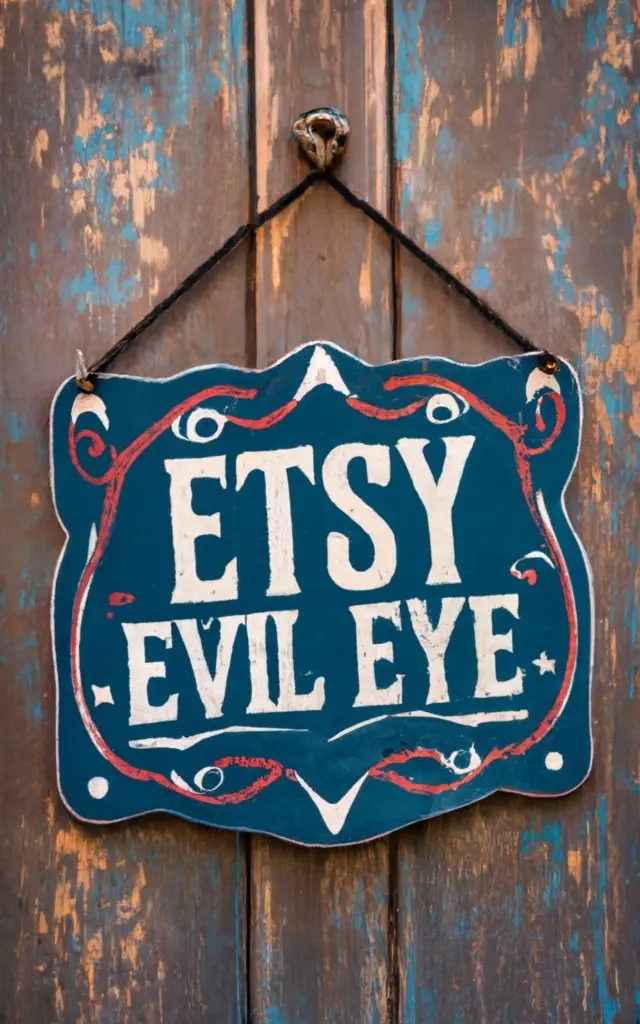
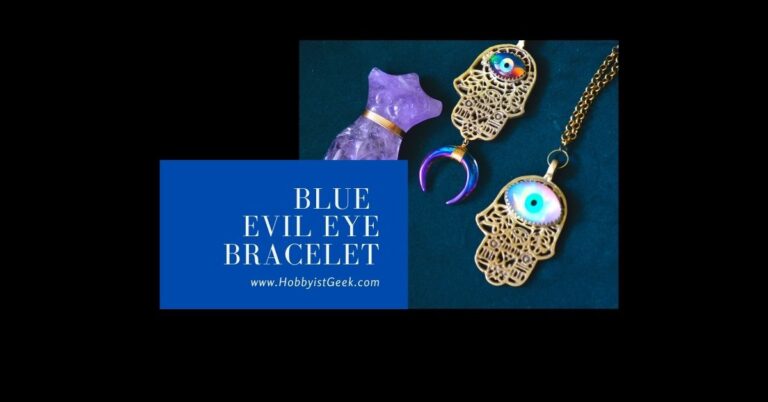
![Evil Eye Protection Celebrities: You Won't Believe 13 Top Hollywood Stars Are Wearing! [Part 1] Evil Eye Protection Celebrities: You Won’t Believe 13 Top Hollywood Stars Are Wearing! [Part 1]](https://www.hobbyistgeek.com/wp-content/uploads/2023/07/Evil-Eye-Protection-Celebs-Kim-Kardashian-1-1-768x528.jpg)
